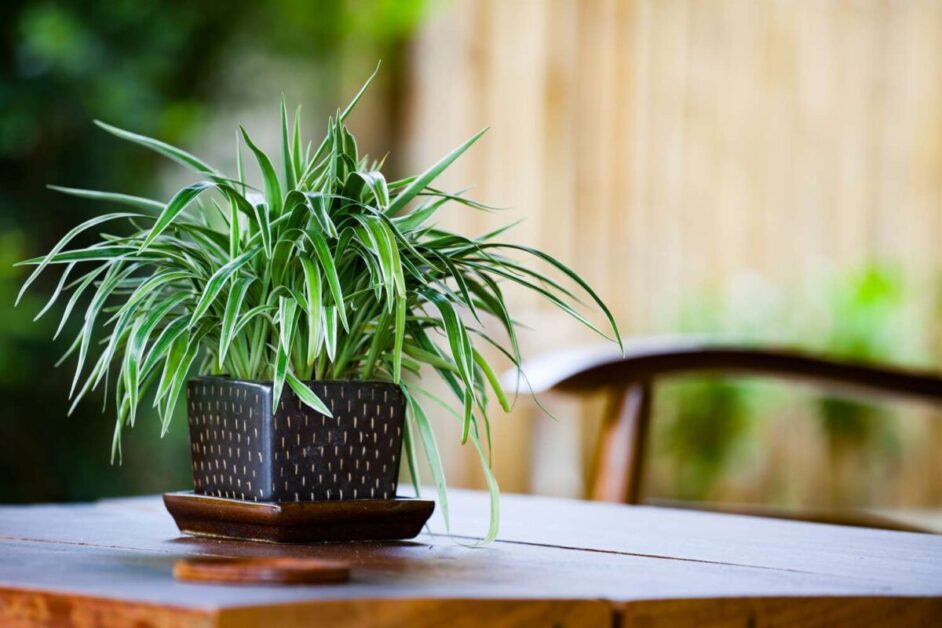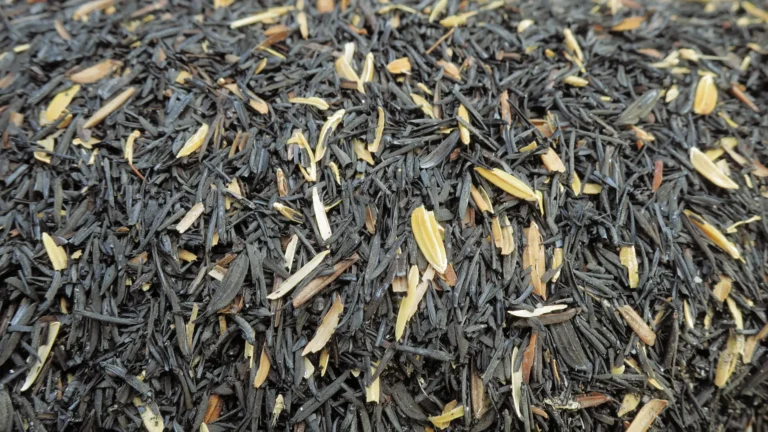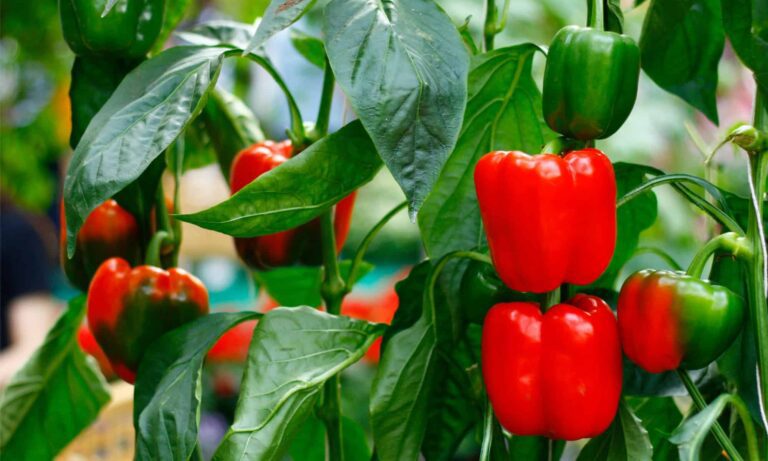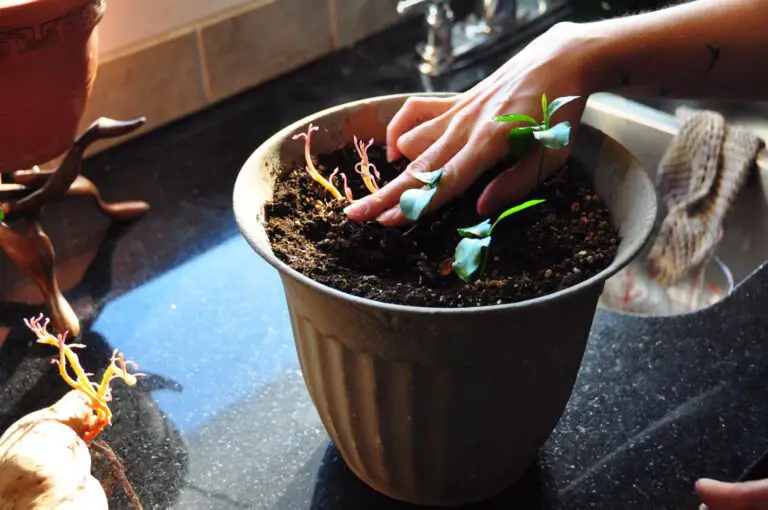Planting, Growing, and Caring for Spider Plants
The Origins of Spider Plants: Understanding Their Native Habitat
Spider plants, scientifically known as Chlorophytum comosum, are native to the tropical and subtropical regions of Africa. More specifically, they can be found in the countries of South Africa and Madagascar. In their natural habitat, these plants thrive in the understory of forests, where they receive filtered sunlight through the dense canopy above. Their ability to adapt to low light conditions has made them popular houseplants, suitable for indoor cultivation.
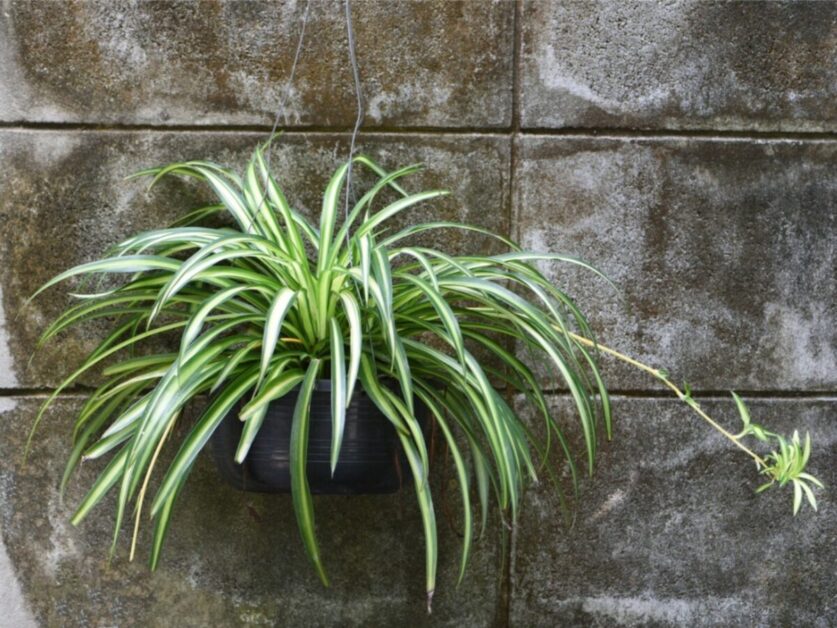
The natural environment of spider plants provides valuable insights into the ideal conditions for their growth and development. These plants prefer temperatures ranging from 60°F to 75°F (15°C to 24°C), and they can tolerate humidity levels as high as 70%. In terms of lighting, they prefer bright, indirect light, but can also adapt to low light conditions. Understanding their native habitat helps gardeners recreate similar conditions in their homes, ensuring the health and vitality of these beautiful plants.
Selecting the Ideal Location for Spider Plants in Your Home
Spider plants are versatile and adaptable houseplants that can thrive in a variety of locations in your home. When selecting the ideal spot for your spider plants, it is important to consider their light requirements, temperature preferences, and overall living conditions.
First and foremost, spider plants prefer bright, indirect sunlight. Placing them near a north or east-facing window is ideal, as they will receive the gentle morning or evening sun without being exposed to intense midday rays. If you have limited natural light in your home, don’t worry; spider plants can also tolerate low light conditions and can do well under fluorescent lights. However, avoid placing them in direct sunlight, as it can scorch their delicate leaves.
In terms of temperature, spider plants prefer temperatures between 55-80°F (12-27°C). They are relatively tolerant of temperature fluctuations, but it is best to avoid placing them in areas with extreme heat, cold drafts, or sudden temperature changes, such as near heating vents or air conditioning units. Maintaining a consistent temperature within this range will help promote healthy growth and prevent stress on the plant.
Additionally, spider plants appreciate average humidity levels, around 40-60%. They can handle slightly drier conditions, but excessively dry air can lead to brown leaf tips. To increase humidity, you can group spider plants together or place them on trays filled with water and pebbles. Avoid placing them near sources of dry air, such as heating or cooling systems.
In summary, selecting the ideal location for spider plants in your home requires consideration of their light, temperature, and humidity preferences. By providing them with the right conditions, you can ensure their health and promote optimal growth in your indoor garden.
Preparing the Soil: Creating the Perfect Growing Environment
Creating the perfect growing environment begins with preparing the soil for your spider plants. These plants thrive in well-draining soil that is rich in organic matter. To achieve this, start by selecting a high-quality potting mix that is specifically formulated for houseplants. Avoid using garden soil, as it can become compacted and hinder root growth.
Next, consider enhancing the soil’s fertility by adding organic amendments such as compost or well-rotted manure. These additions not only provide essential nutrients but also improve soil structure and moisture retention. Aim to incorporate about 25% organic matter into the soil.
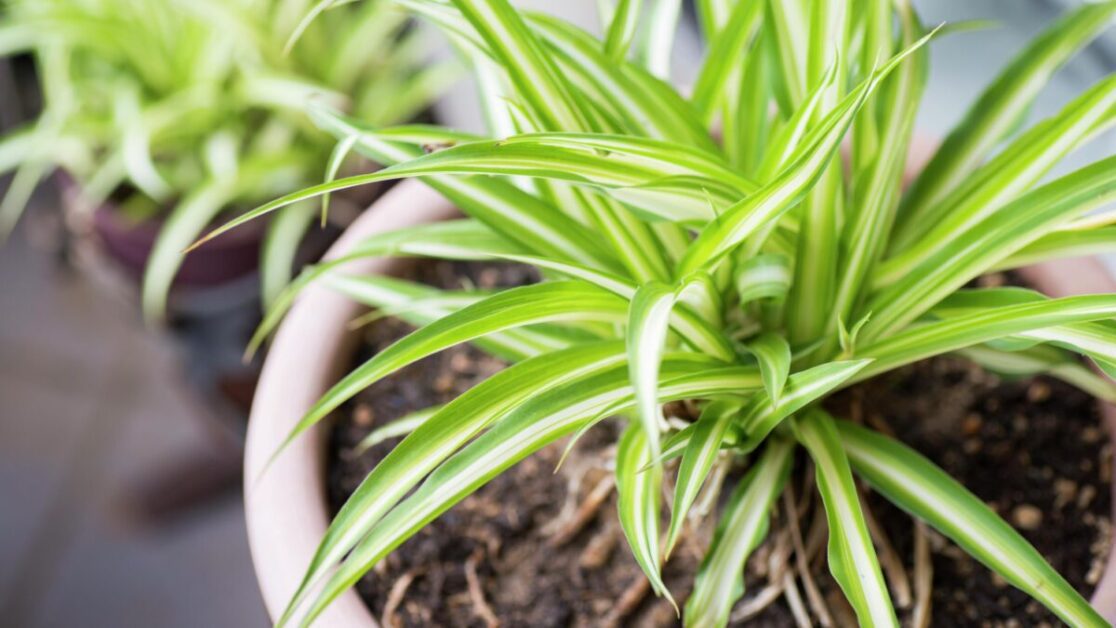
Before planting your spider plants, ensure that the soil is loose and fluffy. This can be achieved by gently tilling the soil to break up any clumps and remove debris. Additionally, it is important to check the soil’s pH levels. Spider plants prefer slightly acidic to neutral soil, with a pH range of 6.0 to 7.0. Adjust the pH if necessary by using amendments like limestone to raise it or elemental sulfur to lower it. Taking these steps will create an optimal growing environment for your spider plants, setting them up for healthy development and robust growth.
Propagation Techniques: Growing Spider Plants from Seeds or Cuttings
Spider plants, scientifically known as Chlorophytum comosum, are relatively easy to propagate either from seeds or cuttings. Propagating spider plants can be a rewarding and cost-effective way to expand your collection or share them with fellow gardening enthusiasts.
To propagate spider plants from seeds, start by collecting ripe, black seeds from the plant’s flower spikes. These seeds are small and can be planted directly into a well-draining potting mix. Gently press the seeds into the soil and keep them moist. Germination usually takes around two to three weeks, and once the seedlings have developed their second set of leaves, they can be transplanted into individual pots.
Cuttings are another popular method of spider plant propagation. When propagating spider plants from cuttings, look for healthy stems with multiple leaves. Using a clean sharp knife or pair of scissors, cut the stem just below a leaf node. Remove any lower leaves to create a clean cut. Place the cutting in a container filled with water or a well-draining potting mix and keep it in a warm, brightly lit area. Within a few weeks, roots will begin to form, and once they are established, the cutting can be potted into its own container.
Watering Spider Plants: Finding the Right Balance of Moisture
Spider plants are known for their ability to adapt to a wide range of watering conditions, making them suitable for both novice and experienced gardeners. However, finding the right balance of moisture is crucial for their overall health and growth. Overwatering can lead to root rot and other fungal diseases, while underwatering can cause the leaves to become dry and brittle.
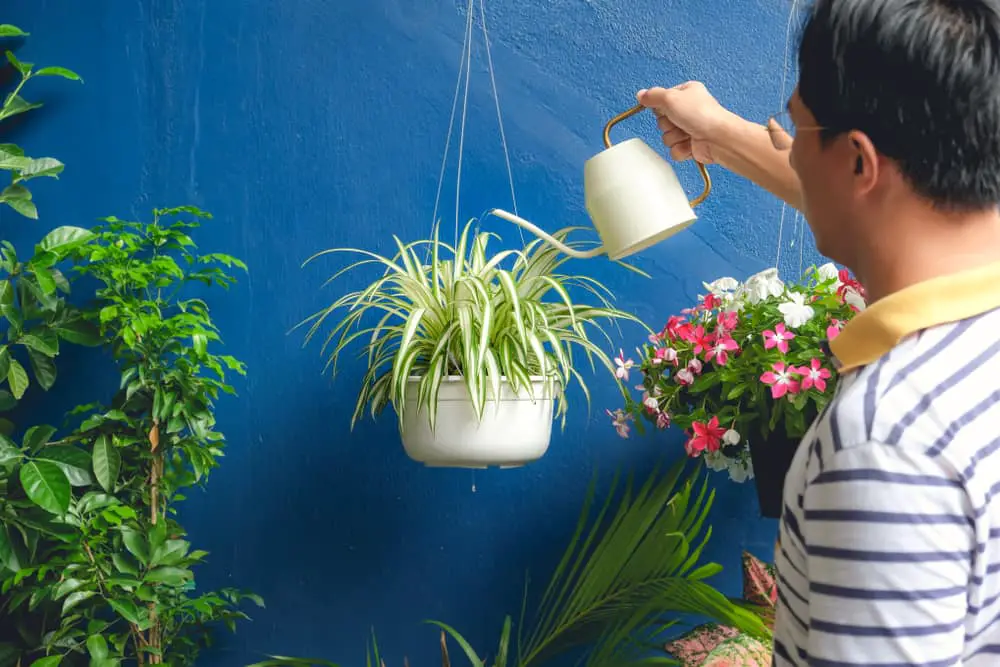
To ensure the optimal moisture level for your spider plants, it is important to understand their natural habitat. In their native environment of tropical and subtropical regions, spider plants are accustomed to periodic heavy rainfall followed by periods of dryness. Mimicking these natural conditions is key to their success in your home or garden. A good rule of thumb is to allow the top inch of soil to dry out between waterings, as this replicates the dry periods they experience in the wild. However, it is worth noting that their watering needs may vary depending on factors such as temperature, humidity, and the size of the plant.
Fertilizing Spider Plants: Nourishing for Optimal Growth
Spider plants, scientifically known as Chlorophytum comosum, are resilient and adaptable houseplants that can thrive with minimal care. However, to ensure optimal growth and vitality, it is essential to provide these plants with the proper nourishment. Fertilizing spider plants at the right time and in the right manner can significantly enhance their overall health and appearance.
When selecting a fertilizer for your spider plant, it is crucial to choose one that is well-balanced and specifically formulated for houseplants. Look for a fertilizer with an N-P-K ratio (nitrogen, phosphorus, and potassium) of around 10-10-10 or 20-20-20. These ratios provide a balanced blend of essential nutrients that promote healthy foliage, root development, and overall growth.
Before applying fertilizer, ensure that the soil is thoroughly moistened. This will help prevent any potential burn or damage to the roots. When feeding your spider plant, dilute the fertilizer according to the manufacturer’s instructions to avoid overfeeding. Overfertilization can lead to a buildup of salts in the soil, causing root burn and other detrimental effects. Apply the diluted fertilizer to the soil, avoiding direct contact with the plant’s foliage.
As a responsible gardener, it is important to note that spider plants do not require frequent fertilization. Applying fertilizer once every two to three months during the growing season (spring to early fall) is generally sufficient. During the dormant winter months, when spider plants undergo a period of rest, it is advisable to suspend fertilization altogether.
By providing the proper nourishment through regular and controlled fertilization, you can ensure that your spider plants receive the essential nutrients they need for optimal growth. However, it is crucial to remember that overfertilization can be detrimental to their health. So, strike a balance by providing just the right amount of nourishment and watch your spider plants flourish with vitality and beauty.
Light Requirements: Providing Adequate Sunlight for Healthy Development
Spider plants are known for their adaptability and ability to thrive in different lighting conditions. However, providing adequate sunlight is crucial for their healthy development. These plants are naturally found in the understory of tropical rainforests, where they receive filtered light through the dense canopy above. Thus, replicating these light conditions in your home is essential for your spider plants’ growth.
When selecting a location for your spider plant, choose a spot that receives bright, indirect sunlight. This could be near a north or east-facing window, where the light is less intense compared to direct afternoon sun exposure. Spider plants can tolerate some direct sunlight, but prolonged exposure can lead to sunburn and damage their delicate leaves.
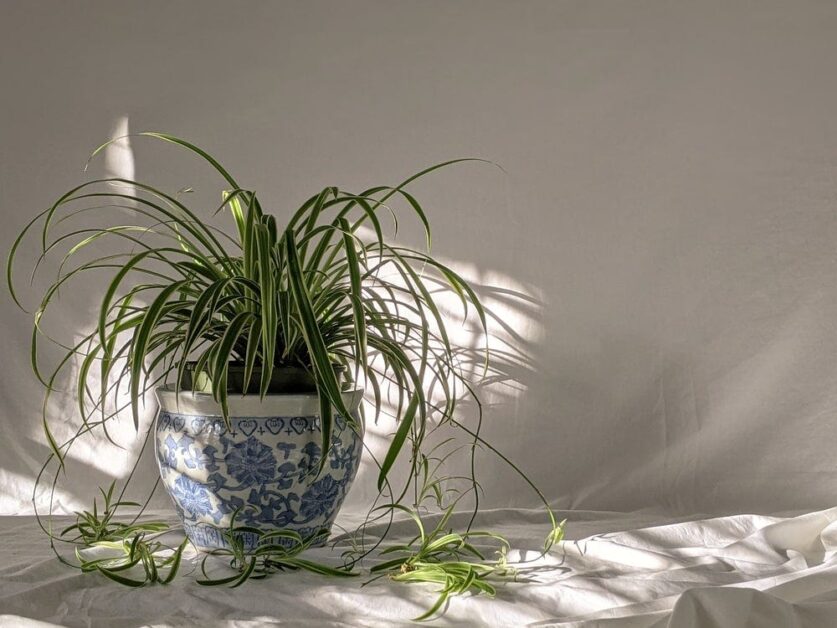
If your home lacks sufficient natural light, consider using artificial lighting sources, such as fluorescent lights or LED grow lights. Position the lights above the plants, ensuring they receive about 12 to 16 hours of light each day. Remember to adjust the height and intensity of the lights depending on the plant’s response and growth. By providing the right amount of light, you will set the stage for beautiful and thriving spider plants in your home.
Temperature and Humidity: Creating the Ideal Climate for Spider Plants
Spider plants thrive in moderate temperatures and humidity levels, making it crucial to create an ideal climate for their growth. The temperature range that spider plants prefer is between 60°F and 75°F (15°C and 24°C). These plants are adaptable to slightly cooler or warmer temperatures, but extreme fluctuations can negatively impact their health. It’s essential to maintain a consistent temperature to promote optimal growth and overall well-being of your spider plants.
In terms of humidity, spider plants appreciate moderate levels between 40% and 50%. Higher humidity levels are beneficial, especially during the dry winter months, as they help prevent the plant’s leaves from drying out. One effective way to increase humidity is by placing a tray of water near the plant or by using a humidifier. Alternatively, you can mist the leaves regularly to provide additional moisture. Proper humidity levels not only enhance the aesthetics of the plant but also help prevent pest infestations and maintain the plant’s vitality.
Creating the ideal climate for spider plants involves maintaining a stable temperature within the recommended range and ensuring moderate humidity levels. By paying attention to these factors, you can provide the optimal environment for their growth and ensure their long-term health and vibrancy.
The table below shows the ideal climate for a spider plant growth:
| Aspect | Recommendations |
|---|---|
| Temperature Range | 1. Maintain a temperature range between 60°F and 75°F (15°C and 24°C). |
| 2. Spider plants are adaptable to slightly cooler or warmer temperatures, but avoid extreme fluctuations. | |
| 3. Consistent temperature is crucial for promoting optimal growth and overall well-being. | |
| Humidity Levels | 1. Keep humidity levels between 40% and 50%. |
| 2. Higher humidity (especially during dry winter months) helps prevent leaves from drying out. | |
| 3. Increase humidity by placing a tray of water near the plant, using a humidifier, or misting the leaves regularly. | |
| Benefits of Proper Conditions | – Enhances aesthetics and vitality of the plant. |
| – Prevents pest infestations. | |
| – Ensures long-term health and vibrancy of spider plants. |
Pests and Diseases: Identifying and Treating Common Issues
Spider plants are generally hardy and resistant to most pests and diseases. However, there are a few common issues that can affect these plants and hinder their growth. One of the most common problems is spider mites infestation. These tiny pests can be identified by the fine webbing they create on the plant’s leaves. To address this issue, it is important to regularly inspect your plants for any signs of infestation and to isolate any affected plants to prevent the mites from spreading. In mild cases, a thorough wash with water or the use of insecticidal soap can be effective in getting rid of the mites. For more severe infestations, a targeted miticide treatment may be necessary.
Another common problem that can afflict spider plants is root rot. This occurs when the plant’s roots are excessively saturated with water, leading to the growth of harmful fungi. To prevent root rot, it is crucial to provide well-draining soil and to avoid overwatering. If you notice the plant’s leaves turning yellow or brown, or if you detect a foul smell coming from the soil, it may be an indication of root rot. In such cases, it is recommended to remove the affected parts of the plant and replant it in fresh, well-draining soil. Additionally, adjusting the watering schedule and ensuring proper ventilation can help prevent future occurrences of root rot in spider plants.
By staying vigilant and promptly addressing any signs of pests or diseases, you can ensure the health and vitality of your spider plants. Regular inspection, proper watering techniques, and appropriate treatment methods are key to maintaining a thriving plant. Remember, prevention is always better than cure when it comes to protecting your plants from common issues.
Pruning and Grooming Spider Plants: Maintaining Their Aesthetic Appeal
When it comes to maintaining the aesthetic appeal of your spider plants, pruning and grooming play a crucial role. Regular pruning helps to keep the plants looking tidy and encourages healthy growth. Additionally, grooming can help to prevent the plants from becoming overcrowded and tangled, allowing them to thrive and display their beauty to the fullest.
Start by inspecting your spider plant for any dead leaves or foliage. These should be removed promptly, as they not only detract from the overall appearance of the plant but can also attract pests and disease. Gently trim off any yellowing or browning leaves, making sure to use clean, sharp scissors or pruning shears to minimize the risk of introducing bacteria or causing damage to the plant. It’s important to note that spider plants have the ability to regenerate new growth from their root system, so do not be afraid to remove any damaged or unsightly leaves. Regular grooming, including removing any spent flowers or seed pods, can also help to redirect the plant’s energy towards new growth and promote a healthier, more vibrant appearance.
Repotting Spider Plants: When and How to Transplant
Repotting spider plants is an essential task to ensure their continued growth and health. Knowing when and how to transplant these beautiful plants is crucial to help them thrive in their new environment.
The best time to repot spider plants is during the spring or early summer months when they are actively growing. This allows the plants to adjust to their new surroundings and establish their roots before facing the challenges of the winter season. When selecting a new pot, make sure it is bigger than the current one to provide enough space for the plant’s roots to spread. Additionally, choose a pot with drainage holes to prevent waterlogged soil, which can lead to root rot.
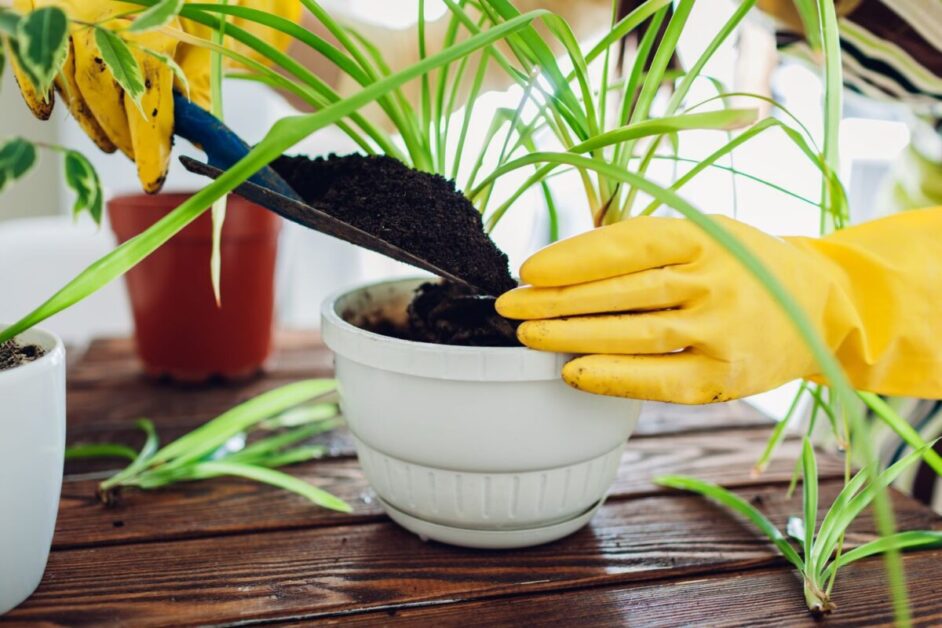
To begin the repotting process, gently remove the spider plant from its current pot by holding the base of the plant firmly and tipping the pot upside down. Gently tap the pot’s sides or squeeze it to loosen the soil, allowing the plant to slide out easily. Inspect the root system, and if it appears tangled and overcrowded, gently tease the roots apart. Remove any dead or damaged roots with sterilized pruning shears. Place a layer of fresh potting soil in the new pot, ensuring it is evenly spread. Then, carefully place the spider plant in the center of the pot and fill the edges with additional potting soil, gently pressing it to secure the plant in place.
It is important to note that spider plants can benefit from periodic repotting every two to three years to provide fresh nutrients and prevent root-bound situations. By following these guidelines, you can ensure a successful repotting process and help your spider plants continue to flourish in their new home.
Spider Plant Varieties: Exploring Different Types and their Characteristics
Spider plants, scientifically known as Chlorophytum comosum, are popular houseplants that are loved for their long, arching leaves and delicate white flowers. Beyond their classic appearance, spider plants also come in a variety of different types, each with its own unique characteristics. Exploring these different varieties can not only help gardening enthusiasts choose the perfect spider plant for their homes but also provide a fascinating glimpse into the diversity of this species.
One popular variety of spider plant is the “Vittatum,” which features green leaves with broad white stripes running down the center. This striking contrast adds an eye-catching element to any indoor space. Another variety is the “Bonnie,” which displays compact leaves that grow in a dense rosette pattern. With its smaller size and more clustered foliage, the Bonnie spider plant is an excellent choice for those seeking a more compact and visually intriguing option. Additionally, the “Variegatum” variety showcases leaves with a unique blend of green, yellow, and creamy-white stripes. Not only does this variation of spider plant add a splash of color to any room, but it also thrives in low-light conditions, making it an ideal choice for darker corners of the house. Other spider plant varieties such as “Mandaianum,” “Ocean,” and “Zebra” offer further diversity, each boasting its own distinct leaf patterns, growth habits, and visual appeal.
Here is a table that will help us to kow more about the different types of spider plants:
| Spider Plant Variety | Characteristics |
|---|---|
| Chlorophytum comosum | – Common green variety with arching leaves and offshoots (“pups”). |
| C. comosum ‘Vittatum’ | – Variegated green and white leaves. |
| C. comosum ‘Bonnie’ | – Compact growth, suitable for smaller spaces. |
| C. comosum ‘Mandaianum’ | – Curled or twisted leaves, ideal for hanging baskets. |
| C. comosum ‘Variegatum’ | – Variegated leaves with white stripes. |
| C. comosum ‘Zebra’ | – Green leaves with central white stripes (zebra pattern). |
| C. comosum ‘Hawaiian’ | – Green leaves with white stripe and pink margins. |
| C. comosum ‘Milky Way’ | – Variegated leaves with irregular white spots resembling a starry night sky. |
Spider Plant Decor: Creative Ways to Display and Showcase Them
Spider plants are not only beautiful and easy to care for, but they also make excellent additions to any home decor. Their cascading foliage and unique spider-like appearance can add a touch of elegance and whimsy to any space. With a variety of creative ways to display and showcase them, spider plants can truly become the focal point of your interior design.
One popular way to showcase spider plants is by hanging them in macrame plant hangers. These intricately knotted holders not only provide a stylish and bohemian aesthetic but also allow the spider plant to dangle gracefully, showcasing its dangling stems and cascading leaves. Macrame plant hangers come in different colors and designs, giving you the flexibility to match your home’s overall decor.
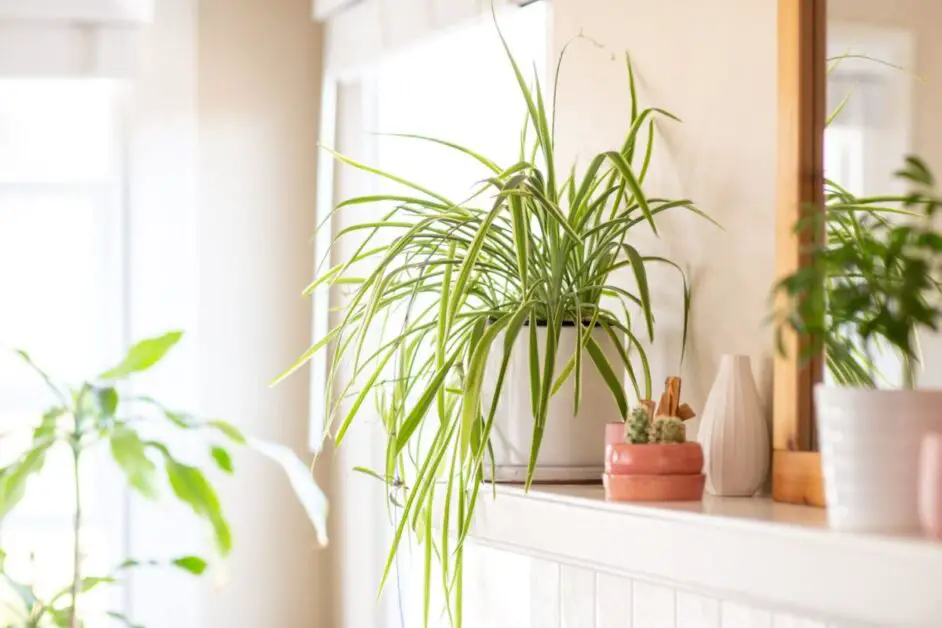
Another creative way to display spider plants is by placing them in uniquely shaped pots or containers. Opting for pots with interesting textures or patterns, such as ceramic pots with geometric designs or vintage-inspired tin containers, can highlight the spider plant’s distinct foliage. Additionally, using pots of varying sizes and heights can create a visually appealing arrangement, adding depth and dimension to your display.
In addition to macrame hangers and decorative pots, spider plants can also thrive in terrariums or glass containers. These enclosed environments not only provide a unique and eye-catching way to showcase your plants but also create a microclimate that can benefit spider plants. The transparent glass allows you to admire every aspect of the plant’s growth, while the enclosed space helps to trap moisture and create a more humid microclimate, which spider plants love.
With so many creative options for displaying and showcasing spider plants, you can find the perfect way to integrate them into your home decor. Whether it be through hanging them in macrame hangers, placing them in decorative pots, or even creating a stunning terrarium, spider plants are versatile plants that can enhance the aesthetic appeal of any space.
Spider Plants in Outdoor Gardens: Tips for Successful Cultivation
When cultivating spider plants in outdoor gardens, there are a few tips to keep in mind for successful growth and development. First and foremost, it’s important to select a suitable location that provides the ideal conditions for these plants. Spider plants thrive in bright, indirect sunlight, so choose an area that receives partial shade or filtered light throughout the day. Avoid placing them in direct sunlight, as this can lead to sunburn and leaf damage.
In terms of soil preparation, spider plants prefer well-draining soil that is rich in organic matter. Before planting, ensure that the soil is loose, crumbly, and has good drainage. You can enhance the soil’s fertility by adding compost or well-rotted manure. This will provide the necessary nutrients for healthy growth and vibrant foliage. Additionally, consider performing a soil pH test to ensure that the levels are within the optimal range of 6.0 to 7.0 for spider plants. Making these preparations will create a favorable growing environment, allowing your spider plants to flourish in your outdoor garden.
Spider Plants as Air Purifiers: Understanding their Environmental Benefits
Spider plants, scientifically known as Chlorophytum comosum, have gained popularity not only for their attractive appearance but also for their ability to purify the air. These beautiful houseplants have been recognized for their remarkable ability to remove harmful toxins, making them an excellent choice for indoor environments.
Studies have shown that spider plants can effectively remove toxins such as formaldehyde, carbon monoxide, xylene, and benzene from the air. These compounds are commonly found in household items like furniture, carpets, cleaning products, and paints. As spider plants absorb these pollutants through their leaves, they release fresh oxygen, creating a healthier and more oxygen-rich indoor environment.
Aside from their air-purifying qualities, spider plants are also known to release moisture vapor into the air through a process called transpiration. This not only increases humidity levels but also helps to reduce the occurrence of respiratory problems and dry skin. In fact, spider plants have been found to be particularly beneficial for those suffering from allergies, asthma, and other respiratory issues. The presence of spider plants in your home can contribute to a more comfortable and breathable atmosphere.
With their ability to purify the air and improve indoor air quality, spider plants are undoubtedly a great addition to any home or office space. In the next section, we will explore the specifics of caring for spider plants, including their light requirements and the ideal temperature and humidity levels for their growth.
Learn more about spider plant by watching the video.
Troubleshooting Guide: Troubleshooting Common Problems with Spider Plants
Spider plants are generally easy to care for, but like any plant, they can encounter some common problems. One issue that may arise is browning or yellowing leaves. This can be caused by overwatering, underwatering, or exposure to extreme temperatures. To remedy this, first check the moisture level of the soil. If it is too dry, increase your watering frequency, but be sure to avoid overwatering, as it can lead to root rot. If the soil is consistently wet, reduce watering to allow the roots to dry out. Additionally, ensure that your spider plant is not exposed to direct sunlight or drafts, as this can cause leaf discoloration. Transferring the plant to a more suitable location with indirect sunlight can help revive the plant’s health.
Another potential problem is the appearance of brown tips on the spider plant’s leaves. Brown tips are often a sign of low humidity or an uneven watering schedule. Spider plants thrive in moderate humidity, so you may want to consider placing a humidifier near your plant or misting it regularly with water. It’s also important to maintain a consistent watering routine. Over time, nutrients can accumulate in the soil and affect the plant’s ability to absorb water properly. To prevent this, occasionally leach the soil by thoroughly watering until the excess water drains out from the bottom of the pot. This will help flush out any excess salts and maintain a healthier root system. By addressing these issues promptly, you can keep your spider plants looking vibrant and lush.
How often should I water my spider plant?
Spider plants prefer slightly moist soil, so it is recommended to water them every 1-2 weeks or when the top inch of soil feels dry.
Can spider plants tolerate direct sunlight?
While spider plants can tolerate some direct sunlight, it is best to place them in bright, indirect light. Too much direct sunlight can scorch their leaves.
How can I propagate spider plants from cuttings?
To propagate spider plants from cuttings, simply snip off a healthy leaf with a stem and place it in water or moist soil until roots develop.
What are the common pests that affect spider plants?
Spider mites, aphids, and mealybugs are common pests that can affect spider plants. Regularly inspect your plants for any signs of infestation and treat them accordingly.
When should I repot my spider plant?
Repot your spider plant when it becomes root-bound or outgrows its current pot. This is usually done every 1-2 years, preferably in spring or early summer.
Can spider plants be grown outdoors?
Spider plants can be grown outdoors in mild climates, but they should be protected from direct sunlight and extreme temperatures. They are more commonly grown as indoor plants.
How do spider plants help purify the air?
Spider plants are known for their air-purifying qualities as they can remove pollutants like formaldehyde and benzene from the air. They do this by absorbing these toxins through their leaves.
Are spider plants toxic to pets?
Spider plants are considered non-toxic to cats and dogs. However, if ingested in large quantities, they may cause mild stomach upset. It is always best to monitor your pet’s access to houseplants.
How can I prevent yellowing leaves on my spider plant?
Yellowing leaves on a spider plant can be a sign of overwatering or underwatering. Ensure you are providing the right amount of water and adjust as needed. Additionally, ensure the plant is receiving adequate light and nutrients.
Can spider plants survive in low humidity environments?
Spider plants can tolerate average indoor humidity levels, but they prefer higher humidity. Consider misting the leaves or placing a humidifier near the plant to increase humidity.

Pallavi Gupta is a burgeoning writer at SouthElMonteHydroponics, blending her passion for data analysis with a keen interest in biotechnology. Currently pursuing a Bachelor’s in Biotechnology at Amity University, Pallavi delves into the intricacies of life sciences while gaining hands-on experience in the exciting world of data analysis. Her unique background provides a fresh perspective on hydroponic farming, as she explores the intersection of biotechnology and sustainable agriculture. Through her writing, Pallavi aims to bridge the gap between data-driven insights and innovative farming practices, inspiring others to harness technology for a greener future.

